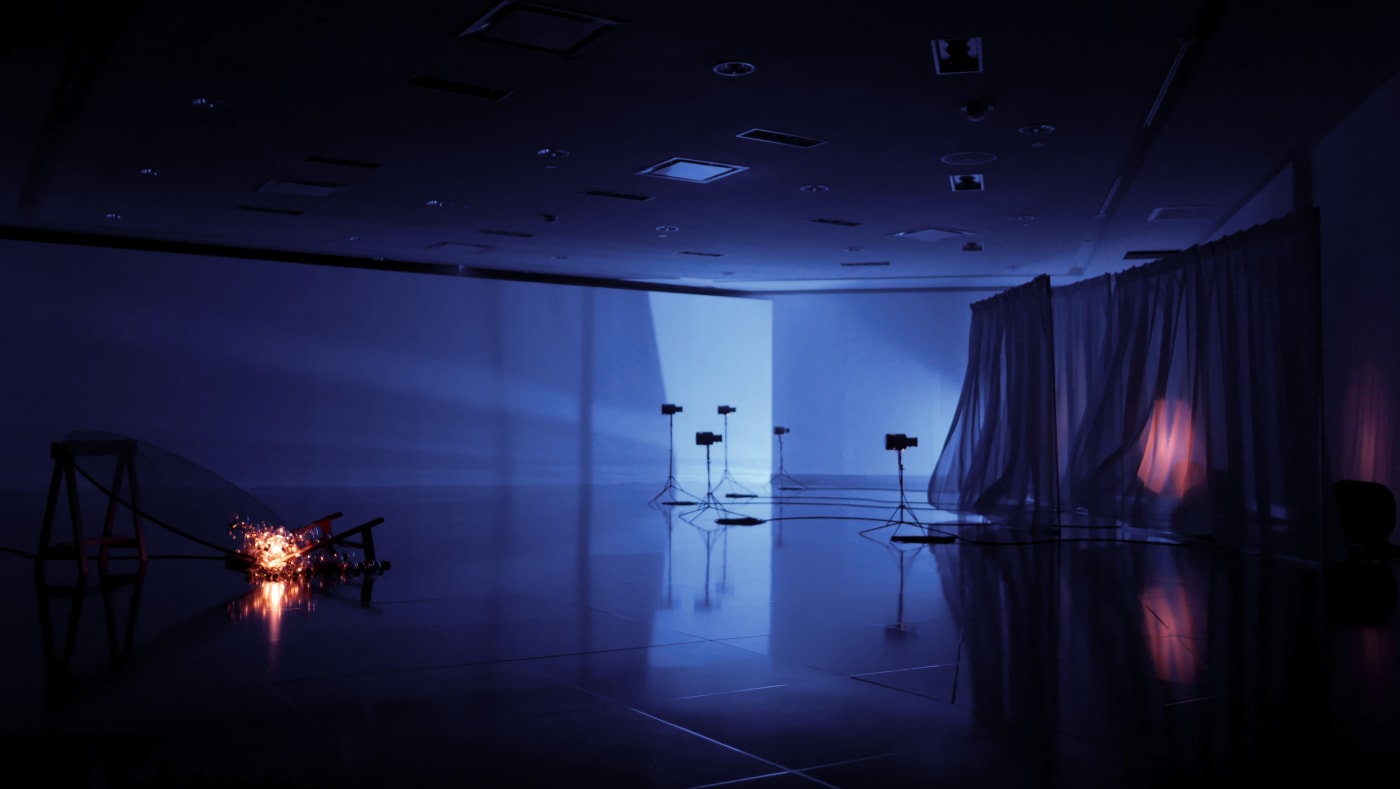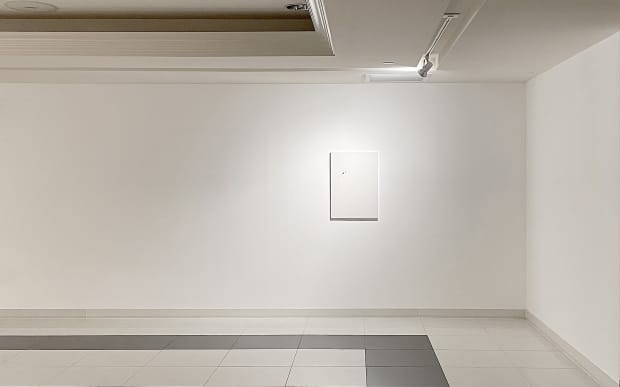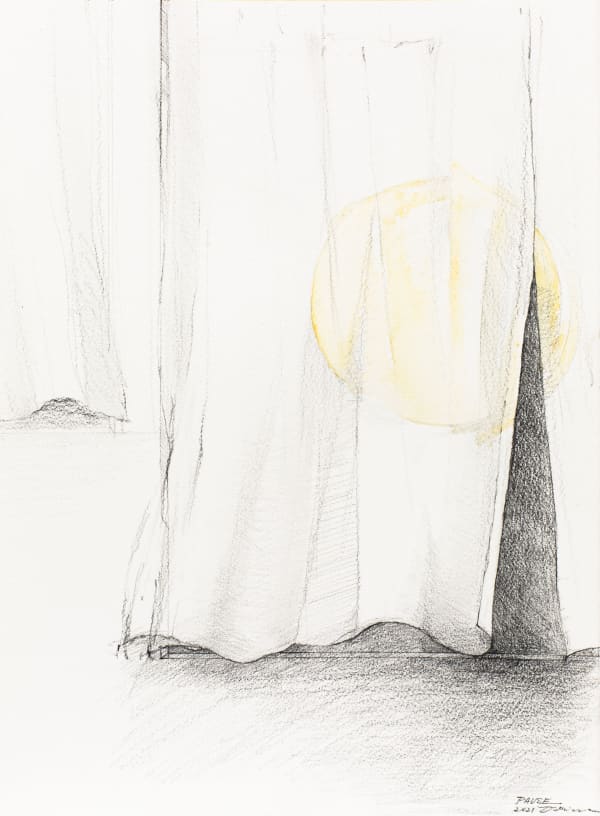-
Tsuyoshi Hisakado and Masanori Handa are participating in the Hawai‘i Triennial 2022 "Pacific Century - E Ho'ommau no Moananuiākea" which commenced on 18 February 2022. The exhibition is composed of works focusing on the history, place, and identity within the context of Hawai’i. We had a chat with Tsuyoshi Hisakado, who visited Hawai’i for the Triennial during the current global pandemic.
-
In Conversation with Tsuyoshi Hisakado
-

-
O: Both of the exhibited artworks "Pause" (2022) and "Crossfades #1" (2015/2020) deal with the concept of time. Were there any reasons for selecting these artworks for the Hawai’i Triennial this time?
T: Since this is the first time I am exhibiting in the United States, I have selected a work that is representative and easy to convey. Moreover, the installation titled "Pause" was derived from an event that made me start my career as an artist. In 2011, the Great East Japan Earthquake happened. Reflecting on this incident, I decided to take on the challenge of re-starting my artist career and to live a life that is convincing to me. When I was a junior high school student, I experienced the Great Hanshin Earthquake and thought that such a big change would not happen in my life anymore, but now we are facing Coronavirus and are being placed in a situation where everyone has to stand still. This work seeks to convey the thought that the present situation does not reflect a complete stop, instead, it is at a paused state. While doubting and confirming various things that previously seemed absolute in life and society, everyone is carefully thinking about their lives from now on.
"Crossfades # 1" started with the concept of "increasing the resolution of perception". In addition to that, I want to suggest how one can expand their life from the current starting point.
Since both "Pause" and "Crossfades # 1" are time-based works of some sort, they have something in common with ‘time’. But from a different perspective, ‘how to live your one and only life in a timeline that is supposedly eternal’ is a common theme for all humankind. There are several important crossroads in life. These timings of when to stand still are very valuable, which is what I want to express in both works. I wanted to confirm if this feeling can be felt overseas, so I decided to exhibit these works at the Hawai’i Triennial.
-
-

-
O: After having this experience in Hawai’i, could you share if you have any ideas for new works which you would like to challenge in the future.
T: It is still unclear what kind of relationship Covid-19 and humankind will build in the future. But perhaps it will become more difficult to physically visit the site to pick up elements locally and build up a space. While respecting this style of working and maintaining the fundamental parts of the work, it may become impossible to deliver the artwork unless one can find alternative methods.
I have not been making video works, but I am tempted to make a movie-like piece. I want to think of some form of artwork that allows one to experience a space and provides a fulfilling narrative as if they have just finished watching a film. Realistically, I am imagining the experience of walking through a long corridor. I am now using various media such as 3D and 2D, artificial light and wind, sound and programming. I also want to include text, smell, humidity and temperature to create a work that moves one’s heart.
What I meant earlier of finding alternative methods is not equal to a digitized and highly mobile thing. But instead, it is a substance that feels like blood is flowing, and will not be affected by the speed of modern society. I want to find something that will certainly reach the viewer’s nerves.
-
Hawai‘i Triennal 2022
Title: Hawai‘i Triennal 2022: Pacific Century – E Ho‘omau no Moananuiākea
Exhibition Period:18th February - 8th May 2022
Venue:Royal Hawaiian Center, 2201 Kalakaua Ave. Honolulu, HI 96815, Hawaii, USA
For more information, click here. -
Tsuyoshi Hisakado will have an upcoming solo exhibition in our Tokyo gallery this summer.
-
About the Artist
Born in Kyoto in 1981, Tsuyoshi Hisakado completed a M.F.A. at the Department of Sculpture of the Kyoto City University of Arts in 2007. Hisakado's practice focuses on the seemingly mundane aspects of everyday life. He assembles evidence of history and phenomena that are unique to specific places, creating installations that combine sound, light, and sculpture. In March 2020, Hisakado held his first museum-scale solo exhibition at the Toyota Municipal Museum of Art, Japan. Hisakado was elected the East Asian Cultural Exchange Envoy and has been awarded the 'Mercedes-Benz Art Scope 2018-2020', the Audience Award at the 'NISSAN ART AWARD 2015', and the Grand Prize of the 'VOCA 2016 The Vision of Contemporary Art'. He has participated in various group exhibitions including the '58th Venice Biennale 2019: May You Live in Interesting Times" (Venice, 2019)', 'Asia Corridor Contemporary Art Exhibition (Kyoto, 2017)', 'AICHI TRIENNALE 2016 rainbow caravan' and has held solo exhibitions at 'MoCA Pavilion Special Project (Shanghai, 2016), Ota Fine Arts Singapore (2015) and Ota Fine Arts Tokyo (2018). Hisakado is a founding member of the artist collective SHlNCHIKA which was formed in 2002.
To learn more about the artist, please click here.
-
Available Works
-
 Tsuyoshi HisakadoA polite existence - Perfect Relations -, 2021Pencil, watercolor pencil on paper34 x 24.5 cm
Tsuyoshi HisakadoA polite existence - Perfect Relations -, 2021Pencil, watercolor pencil on paper34 x 24.5 cm -
 Tsuyoshi HisakadoPAUSE, 2021Pencil, watercolor pencil on paper34 x 24.5 cm
Tsuyoshi HisakadoPAUSE, 2021Pencil, watercolor pencil on paper34 x 24.5 cm -
 Tsuyoshi HisakadoUntitled, 2021Acrylic, paper on wood panel60 x 216 x 6 cm
Tsuyoshi HisakadoUntitled, 2021Acrylic, paper on wood panel60 x 216 x 6 cm -
 Tsuyoshi HisakadoFork of Noise #2, 2021paper, brass, acrylic, movement, battery, wood, color paperH23 x 27.2 x 39.3 cm
Tsuyoshi HisakadoFork of Noise #2, 2021paper, brass, acrylic, movement, battery, wood, color paperH23 x 27.2 x 39.3 cm
-
 Tsuyoshi Hisakadocrossfades #4 / rain, 2020Silkscreen, ink on paper76.5 x 56 cm
Tsuyoshi Hisakadocrossfades #4 / rain, 2020Silkscreen, ink on paper76.5 x 56 cm -
 Tsuyoshi Hisakadocrossfades #4 / collapse xiv (confusion), 2020Silkscreen, ink on paper76.5 x 56 cm
Tsuyoshi Hisakadocrossfades #4 / collapse xiv (confusion), 2020Silkscreen, ink on paper76.5 x 56 cm -
 Tsuyoshi Hisakadocrossfades #4 / world viii (cue), 2020Silkscreen, ink on paper76.5 x 56 cm
Tsuyoshi Hisakadocrossfades #4 / world viii (cue), 2020Silkscreen, ink on paper76.5 x 56 cm -
 Tsuyoshi Hisakadocrossfades #4 / window (blossom), 2020Silkscreen, ink on paper76.5 x 56 cm
Tsuyoshi Hisakadocrossfades #4 / window (blossom), 2020Silkscreen, ink on paper76.5 x 56 cm
-
-

-

Past viewing_room














